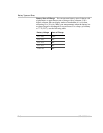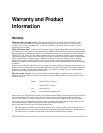$
AC output cable, requirements 2–20
amp-hour (Ah) capacity B–3
%
back panel features 1–5
batteries
amp-hour (Ah) capacity
B–3
automotive starting B–2, B–3
connecting two in parallel B–6
deep-cycle lead-acid B–2
depth of discharge B–5
discharged B–7
electrolyte level B–7
golf cart B–2
marine B–2
recharging 3–5
reserve capacity B–3, B–5
RV B–2
self-discharge B–7
temperature sensitivity B–7
using multiple B–6
using two battery banks B–6
battery banks
connecting
2–17
described B–6
battery chargers 1–2, 3–5
battery connections B–7
battery isolator
avoiding voltage drops
2–15
using B–2
battery monitors 3–5
battery reserve capacity B–3
battery selector switch B–6
battery size
estimating example
B–4
estimating worksheet B–5
estimating your needs B–3, B–4
battery tips B–7
battery voltage, range of 2–22
&
cable clamp
installing
2–20
size of 2–5
Canadian Electrical Code (NEC) 2–3
Canadian Standards Association (CSA) 2–3
chassis ground lug, connecting 2–11
chassis ground, connecting 2–11
clearance, recommended 2–7
connectors, appropriately sized 2–5
copper cable, recommended 2–9, 2–11, 2–16
crimp connectors, recommended 2–14
Customer Service
email
WA–1
fax number WA–1
phone number WA–1
preparing to call WA–4
'
DC cables
connecting
2–17
guidelines for routing 2–15
lengths 2–9
preparing 2–14
DC circuit breaker
See DC fuse and Disconnect.
DC distribution panel
2–15
DC fuse and Disconnect
80 amps
2–9
closing 2–22
installing 2–17
location of 2–14
required 2–15
DC ground bus (dedicated) 2–11
DC grounding point 2–11
depth of discharge (DOD) B–5
(
electrolyte level B–7
email, contacting Customer Service by WA–1
equipment
current draw
B–4
power consumption B–4
explosive gases B–7
Index


















